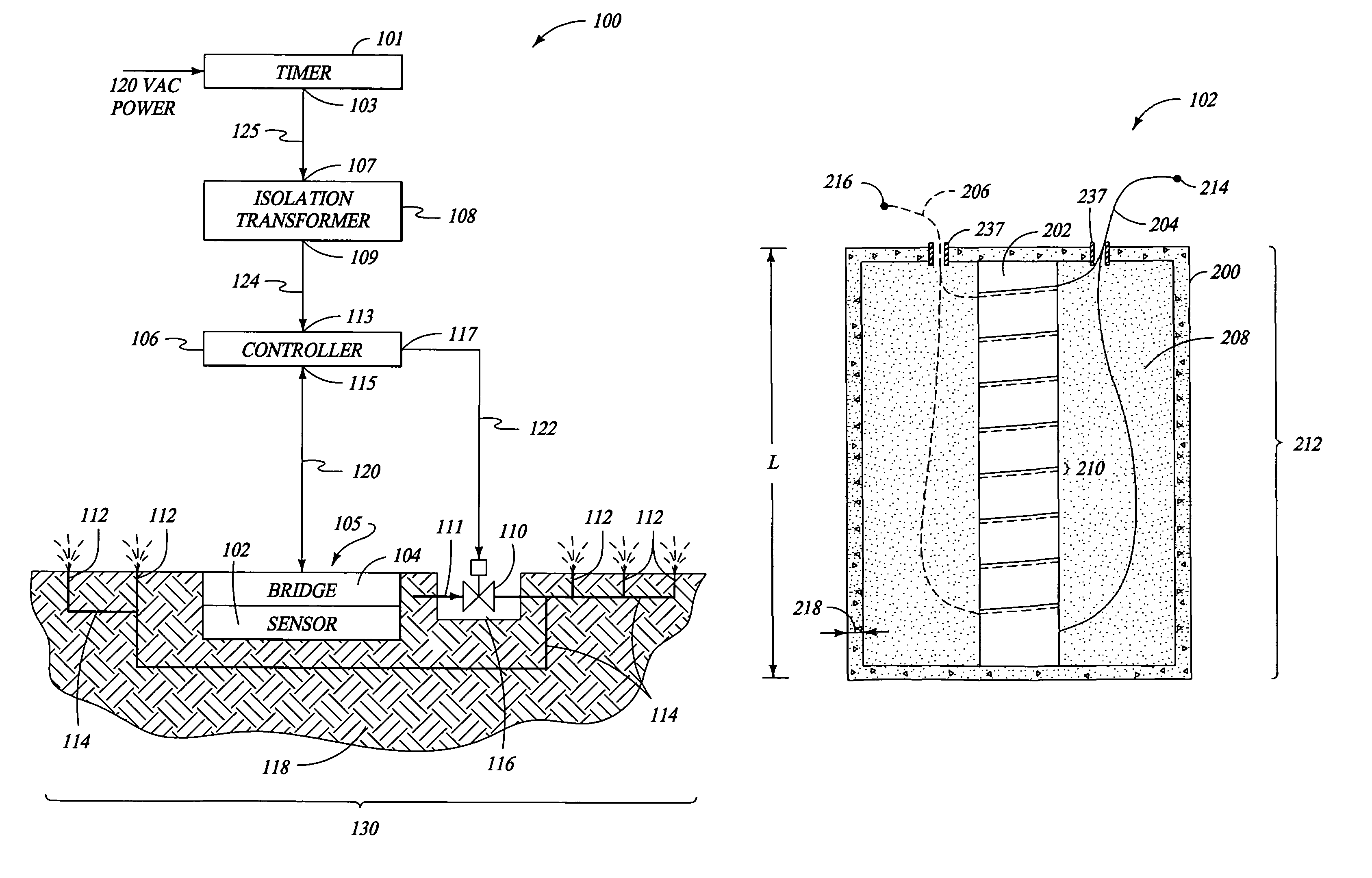Moisture sensor sprinkler control systems
a technology of sprinkler control and moisture sensor, which is applied in the direction of automatic control, process and machine control, instruments, etc., can solve the problems of waste of water, poor performance, and inefficiency
- Summary
- Abstract
- Description
- Claims
- Application Information
AI Technical Summary
Benefits of technology
Problems solved by technology
Method used
Image
Examples
embodiment
of FIG. 2
[0042]FIG. 2 is a block diagram of an irrigation control system 150 according to another embodiment of the invention. Irrigation system 150 includes a timer 101, an isolation transformer 108, and connections 124 and 125 operating similar to as described above for the embodiment of FIG. 1. However, connection 125 is preferably connected to the master valve control terminal of timer 101 and remains on during the entire watering cycle covering all zones.
[0043]Further included in system 150 is a controller 152 coupled to the connection 124 and receiving electrical power therefrom, as controlled by the master valve output signal of timer 101. Controller 152 is similar in operation to controller 106 described above. Controller 152 has multi-channel capability to independently sense and control two separate irrigation zones 154 and 156. This multi-zone capability is accommodated by zone output terminals which are separately communicated by conductors 162 and 164 to individual zone...
PUM
 Login to View More
Login to View More Abstract
Description
Claims
Application Information
 Login to View More
Login to View More - R&D
- Intellectual Property
- Life Sciences
- Materials
- Tech Scout
- Unparalleled Data Quality
- Higher Quality Content
- 60% Fewer Hallucinations
Browse by: Latest US Patents, China's latest patents, Technical Efficacy Thesaurus, Application Domain, Technology Topic, Popular Technical Reports.
© 2025 PatSnap. All rights reserved.Legal|Privacy policy|Modern Slavery Act Transparency Statement|Sitemap|About US| Contact US: help@patsnap.com



